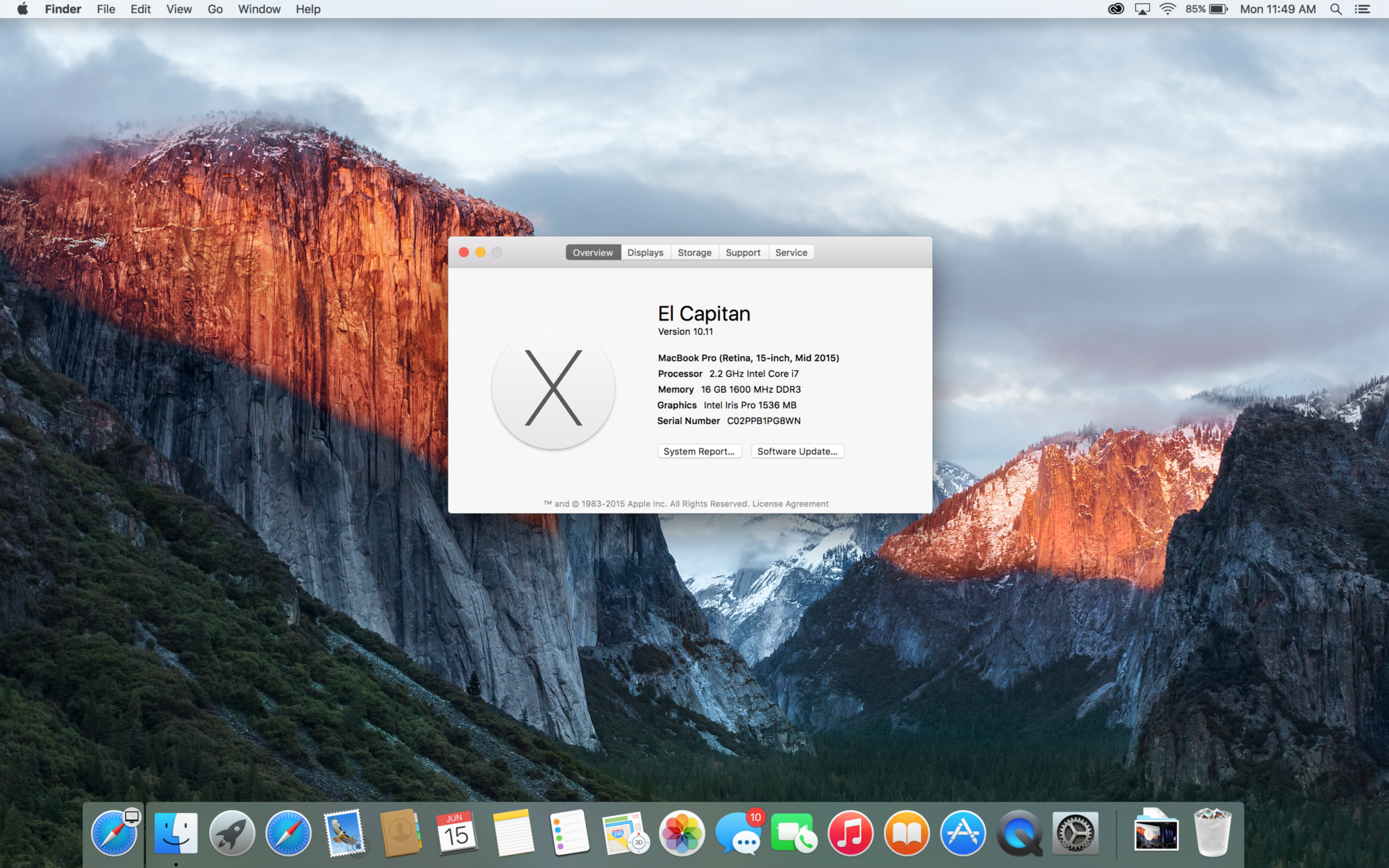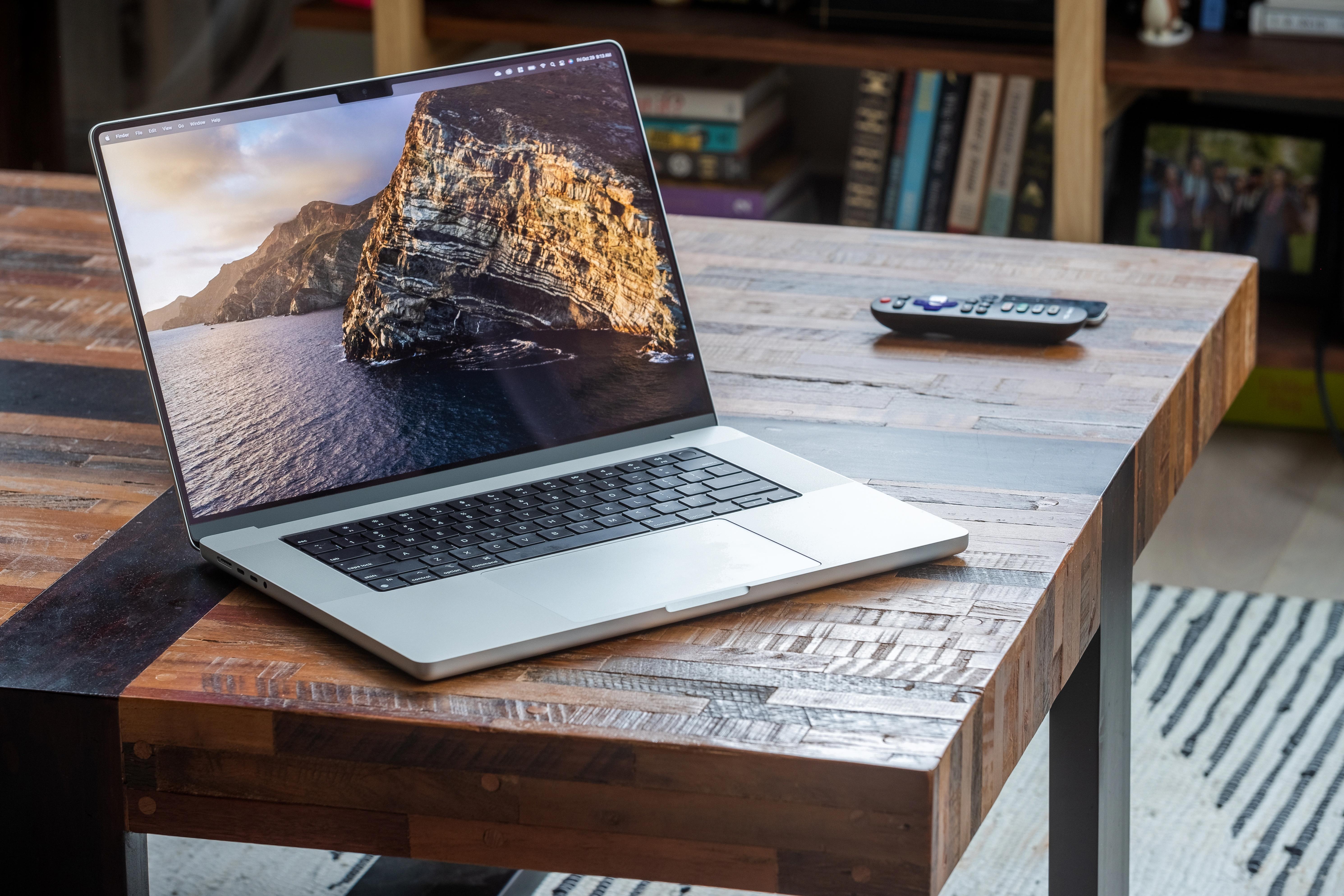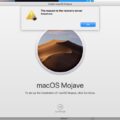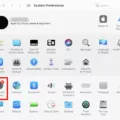Are you looking for information about OS X El Capitan and how to update it to macOS Mojave? You’ve come to the right place. OS X El Capitan is the twelfth major release of the Mac operating system, and it was released in 2015. It brings several new features, such as improved performance, improved security, improved interface navigation, support for Metal graphics acceleration, and more.
Although OS X El Capitan has been around for a few years now, many Mac users are still running it. This is why we’re here to tell you how to upgrade from OS X El Capitan to macOS Mojave. Upgrading your Mac operating system can be a bit tricky, so here are some tips to help you through the process.
First and foremost, it’s important to back up your data before performing any major updates on your Mac. This way, if something goes wrong during the upgrade process, you’ll have your data backed up in case of an emergency. Once your data is backed up safely, open the App Store on your Mac and search for “Mojave” in the search bar. Select “macOS Mojave” from the list of programs and select “Download.” Select “Continue” after reading through the terms and conditions if you agree with them.
Once macOS Mojave has been downloaded onto your computer, follow the on-screen instructions until you reach a point where it asks if you want to transfer information from another Mac or backup disk or from another volume on this computer. If this is not applicable to you, then select “Not Now” and move on to the next step. Once this is complete, select “Install” and follow any other instructions that appear throughout this process until completion.
Congratulations! You have successfully upgraded from OS X El Capitan to macOS Mojave! We hope that our blog post has helped guide you through this process without any hiccups along the way. Enjoy all of the amazing new features available with macOS Mojave now!

Upgrading from OS X El Capitan to Mojave
Yes, you can upgrade from OS X El Capitan to macOS Mojave. Before you upgrade, it is very important to back up your data in case of any data loss issues. To upgrade to macOS Mojave, first check to make sure your Mac is compatible with the new system. Your Mac should be a mid-2012 or newer model and have OS X 10.7.5 or later installed.
You can then download the macOS Mojave installer from the Mac App Store and follow the on-screen instructions to complete the installation. Make sure your Mac has enough available storage space for the update and that you are connected to a reliable Wi-Fi network before beginning the download. After upgrading, you may need to reconfigure settings and customizations for applications that were installed on your Mac prior to upgrading.
Upgrading MacOS X El Capitan
Yes, you can upgrade your macOS X El Capitan to the latest version of macOS. To do so, open the App Store on your Mac and search for “macOS Catalina”. The new version of macOS will appear in the search results. Click on “Get” and follow the on-screen instructions to begin the upgrade process. Once the installation is complete, your Mac will be running macOS Catalina.
Upgrading an iMac from El Capitan to Mojave
Yes, you can upgrade your iMac from El Capitan to Mojave. Before upgrading, it is important to back up your data as major updates can cause data loss. To upgrade from El Capitan to Mojave, follow the below steps:
1. Open the App Store on your Mac and search for macOS Mojave.
2. Click ‘Get’ and then click ‘Download’ when prompted.
3. Follow the on-screen instructions and accept the terms and conditions of the software license agreement.
4. After completing the download process, click ‘Continue’ to start the installation process of macOS Mojave on your iMac by following the on-screen instructions.
5. Once the installation is complete, your iMac will be running macOS Mojave and all your settings will remain intact.
Forcing a Mac to Update to Mojave
To force your Mac to update to Mojave, you will need to open the App Store, search for macOS Mojave, and then download it. After downloading, you will need to read and agree to the terms of service before continuing with the installation. Once you have agreed to the terms, your computer will begin the automatic update process and install Mojave onto your computer.
Manually Upgrading to El Capitan
Manually upgrading your El Capitan to Mac OS X 10.11 is a straightforward process. First, you will need to download the installer from the App Store. To do this, open the App Store on your Mac and search for “OS X El Capitan”. Once you find the page, click on the Download button. You will then be taken through a few simple steps in order to complete the upgrade. If you don’t have access to broadband internet, you can also get the upgrade at your local Apple store. After downloading the installer, double-click on it in your Applications folder and follow the on-screen instructions to finish installing El Capitan on your computer.
Is My Mac Compatible with Mojave?
It is possible to determine if your Mac is able to update to macOS Mojave by checking its model year. If your Mac was released in 2012 or later, then it should be able to update to macOS Mojave. If you are unsure of the model year of your Mac, you can find this information by clicking the Apple icon on the top left corner of the screen, selecting “About This Mac” from the drop-down menu, and then looking at the Overview tab. From there, you should be able to find the model year listed under “Model Information.” If your Mac was released before 2012, unfortunately, it will not be able to update to macOS Mojave.
Updating a Mac When No Update is Available
If your Mac indicates that there are no updates available, you may need to take additional steps to update your system. First, check the App Store for updates. Open the App Store app, which is in your Applications folder. Then click the Updates tab in the App Store to check for updates. If there are any available updates, install them and restart your Mac if necessary.
If you don’t find any updates in the App Store, you may need to manually update your Mac’s software. You can do this by visiting the website of the software developer and checking for available updates. Additionally, if you haven’t already done so, make sure to check Apple’s website for any system-level or security updates that may be available for your Mac.
Finally, it’s also possible that your Mac is already up-to-date with all available updates. If this is the case, then simply running a few maintenance tasks (such as emptying the Trash and running Disk Utility to repair disk permissions) could resolve any issues that you’re having with your system.
Is Mojave a Free Upgrade?
Yes, macOS Mojave is a free software update for Macs that was introduced in mid-2012 or later, plus 2010 and 2012 Mac Pro models with recommended Metal-capable graphics cards. To upgrade to Mojave, simply head to the Mac App Store and follow the instructions to download and install the latest version of macOS. Once installed, you’ll have access to all of the features and improvements offered by Mojave.
Is MacOS Mojave a Free Upgrade?
Yes, macOS Mojave is a free upgrade. Apple has released the latest version of its operating system, macOS Mojave (version 10.14), as a free update to all users of supported Macs. This means you can download and install the new software without having to pay anything. With macOS Mojave, you get access to an array of new features and improvements such as Stacks, Dark Mode, an improved Finder, and more.
Upgrading from El Capitan to Sierra
Yes, El Capitan can be upgraded to Sierra. To do so, simply open the Mac App Store and search for “macOS Sierra”. If it appears in the search results, click on “Get” and follow the on-screen instructions to download and install the upgrade. Once you have successfully completed the installation process, your Mac will be running macOS Sierra.
Troubleshooting Mac OS Update Issues
There are several reasons why your Mac may not be able to update its OS. First, make sure that you have enough RAM and storage space to download the update. If this is not the issue, try restarting your computer and downloading the update manually. Additionally, try booting in safe mode or repairing your hard drive in Disk Utility. If none of these steps work, it may be due to a corruption issue with your hard drive or software, which can usually be fixed by reinstalling the OS or running a disk repair utility.
Updating MacOS Manually
To manually update your macOS, you will need to open the System Settings application. From there, click the General tab in the sidebar (you may need to scroll down). On the right side, you will find the Software Update option. Click this to begin downloading any available updates for your macOS. Once the downloads are completed, you will be prompted to install them. Make sure to save any work that you have open before installing these updates as they may require a restart of your computer.
Conclusion
In conclusion, OS X El Capitan is a great operating system for Mac users. It provides a sleek and modern interface, as well as easy-to-use tools and features that make it easier than ever to work with documents and media. With its improved performance and security, OS X El Capitan offers Mac users a stable and secure computing environment. It is also possible to upgrade from OS X El Capitan to macOS Mojave, with data loss issues being avoided if the correct steps are taken. All in all, OS X El Capitan is an excellent choice for those looking for an efficient and powerful Mac operating system.








